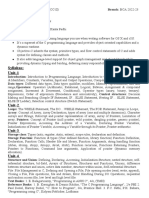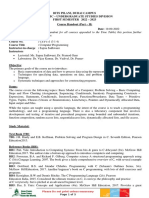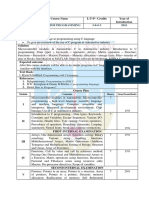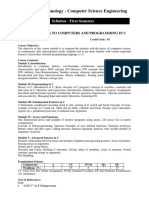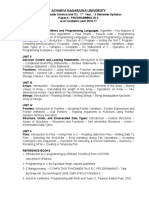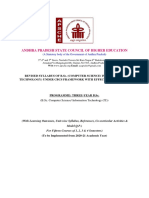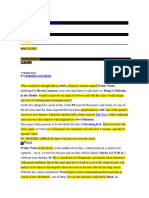0% found this document useful (0 votes)
115 views2 pagesEE207 Computer Progrmming
This document outlines the course details for EE207 Computer Programming. The course objectives are to impart knowledge of programming in C and introduce Python. The syllabus covers topics like basic elements of C, control statements, arrays, functions, structures, pointers, and file management in C. It also provides an introduction to Python. The expected outcomes are the ability to design programs using C and develop simple programs in Python. The course involves lectures, internal exams, and an end semester exam assessing topics from all modules through multiple choice and descriptive questions.
Uploaded by
Shahim MohammedCopyright
© © All Rights Reserved
We take content rights seriously. If you suspect this is your content, claim it here.
Available Formats
Download as PDF, TXT or read online on Scribd
0% found this document useful (0 votes)
115 views2 pagesEE207 Computer Progrmming
This document outlines the course details for EE207 Computer Programming. The course objectives are to impart knowledge of programming in C and introduce Python. The syllabus covers topics like basic elements of C, control statements, arrays, functions, structures, pointers, and file management in C. It also provides an introduction to Python. The expected outcomes are the ability to design programs using C and develop simple programs in Python. The course involves lectures, internal exams, and an end semester exam assessing topics from all modules through multiple choice and descriptive questions.
Uploaded by
Shahim MohammedCopyright
© © All Rights Reserved
We take content rights seriously. If you suspect this is your content, claim it here.
Available Formats
Download as PDF, TXT or read online on Scribd
/ 2





